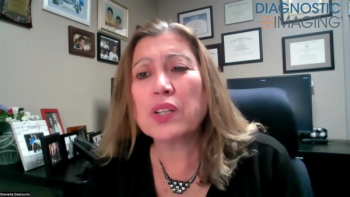
- Diagnostic Imaging Vol 31 No 7
- Volume 31
- Issue 7
CT colonography also detects occult aortic aneurysms
Results of a study by Italian and U.S. investigators suggest CT colonography can simultaneously spot colorectal cancer and abdominal aortic aneurysms.
Results of a study by Italian and U.S. investigators suggest CT colonography can simultaneously spot colorectal cancer and abdominal aortic aneurysms. Findings could help the case for CTC as a cost-effective screening alternative to optical colonoscopy.
Dr. Perry J. Pickhardt, an associate professor of radiology at the University of Wisconsin Medical School in Madison, and colleagues designed a computer model that simulated CRC and AAA development in a hypothetical cohort of 100,000 Medicare patients aged 65 and older. The system compared costs and survival benefits for both screening methods. Among other findings, it showed that at 10-year screening intervals, CTC could yield 7027 life-years and save $1251 per life-year gained. Optical colonoscopy would extend lives by 995 fewer years and would save $147 less per life-year gained (AJR 2009;192[5]:1332-1340).
Articles in this issue
over 16 years ago
Journal article reveals much on CMS CT colonography decisionover 16 years ago
Health finance reveals balloon-like qualitiesover 16 years ago
Medical community must challenge CTC foot-draggingover 16 years ago
Market conditions test economics of diagnostic imaging servicesover 16 years ago
Ten innovative strategies could improve your practiceover 16 years ago
Integration of CAD with PACS breaks down barrier to its useover 16 years ago
Coding and billing applications cut down on staffing, expensesover 16 years ago
Health finance reveals balloon-like qualitiesover 16 years ago
Report anticipates end to equipment purchase freezesover 16 years ago
Minorities often distrust breast cancer screeningNewsletter
Stay at the forefront of radiology with the Diagnostic Imaging newsletter, delivering the latest news, clinical insights, and imaging advancements for today’s radiologists.




























